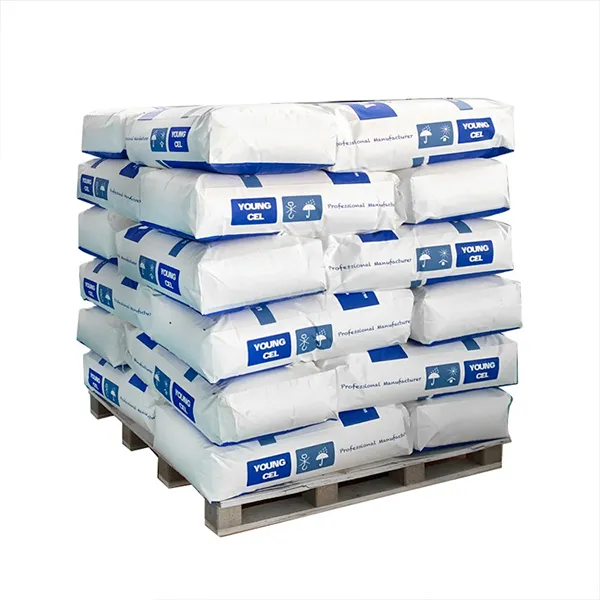Understanding Cellulose Ether Focus on HPMC
Cellulose ethers are a group of non-ionic emulsifiers and film-forming agents derived from cellulose. Among the various types of cellulose ethers, Hydroxypropyl Methylcellulose (HPMC) has gained significant attention due to its versatile properties and wide-ranging applications across different industries, particularly in pharmaceuticals, construction, and food production.
What is HPMC?
HPMC, or Hydroxypropyl Methylcellulose, is a semi-synthetic derivative of cellulose. It is produced by the chemical modification of cellulose, which is derived from plant materials. In the manufacturing of HPMC, the hydroxyl groups of cellulose are reacted with propylene oxide and methyl chloride, which results in a compound that displays enhanced characteristics compared to traditional cellulose. These modifications confer unique physicochemical properties to HPMC, such as improved solubility, viscosity, and gel-forming capability.
Properties of HPMC
One of the significant attributes of HPMC is its ability to dissolve in cold water, forming a clear, viscous solution. This solubility makes it an excellent candidate for various applications, particularly as a thickening and stabilizing agent. HPMC solutions exhibit pseudoplasticity, meaning they become less viscous when subjected to shear stress. This property is highly beneficial in applications requiring easy flow, such as in paints and coatings.
Moreover, HPMC is known for its excellent film-forming capabilities. When dried, HPMC forms flexible films, making it useful in the production of pharmaceutical tablets and coatings, where it aids in controlled drug release. In construction, it serves as an additive in cement-based products to improve workability and water retention.
cellulos ether hpmc

Applications of HPMC
1. Pharmaceuticals HPMC is extensively used in the pharmaceutical industry for drug formulations. It is often employed as a binder in tablet production, as well as a controlled-release agent, enabling medications to be released at a targeted rate. Its biocompatibility and non-toxic nature further enhance its appeal in drug formulation.
2. Food Industry In the food sector, HPMC is utilized as a thickener and stabilizer in various food products, including sauces and dressings. It also acts as a dietary fiber and is a popular choice for gluten-free baking, helping to improve texture and moisture retention.
3. Construction In the construction industry, HPMC is an important ingredient in dry-mix mortars, tile adhesives, and plaster. It improves adhesion and extends the working time, which is crucial for professionals applying these materials. The water retention properties of HPMC ensure that the materials remain workable for an extended period, essential during application.
4. Personal Care Products HPMC is also found in numerous personal care products, including lotions, creams, and shampoos, where it serves as a thickening agent. Its smooth texture enhances the feel of the product on the skin and aids in the even distribution of active ingredients.
Conclusion
The versatility of Hydroxypropyl Methylcellulose (HPMC) stems from its unique chemical properties, making it a highly sought-after cellulose ether in various industries. Whether in pharmaceuticals, food, construction, or personal care, HPMC plays a crucial role in enhancing product performance and consumer experience. Its continued application and research into new uses highlight the importance of cellulose derivatives in modern formulations and underscore the potential for innovation in sustainable, plant-based materials. As demand for versatile and biodegradable compounds increases, HPMC stands out as a key player in the quest for more sustainable industrial practices.
-
Premium Detergent Grade HPMC Hydroxypropyl Methylcellulose: Superior Thickening & StabilityNewsAug.31,2025
-
HEC 100000 Hydroxyethylcellulose for Paint | Superior ThickeningNewsAug.30,2025
-
Wall Putty Rdp Powder Packaging DesignNewsAug.29,2025
-
Introduction to Hpmc Hydroxypropyl Methyl CellulosNewsAug.29,2025
-
Hpmc Industri Grade IntegrationNewsAug.29,2025
-
How to Choose the Right Construction AdhesiveNewsAug.29,2025




